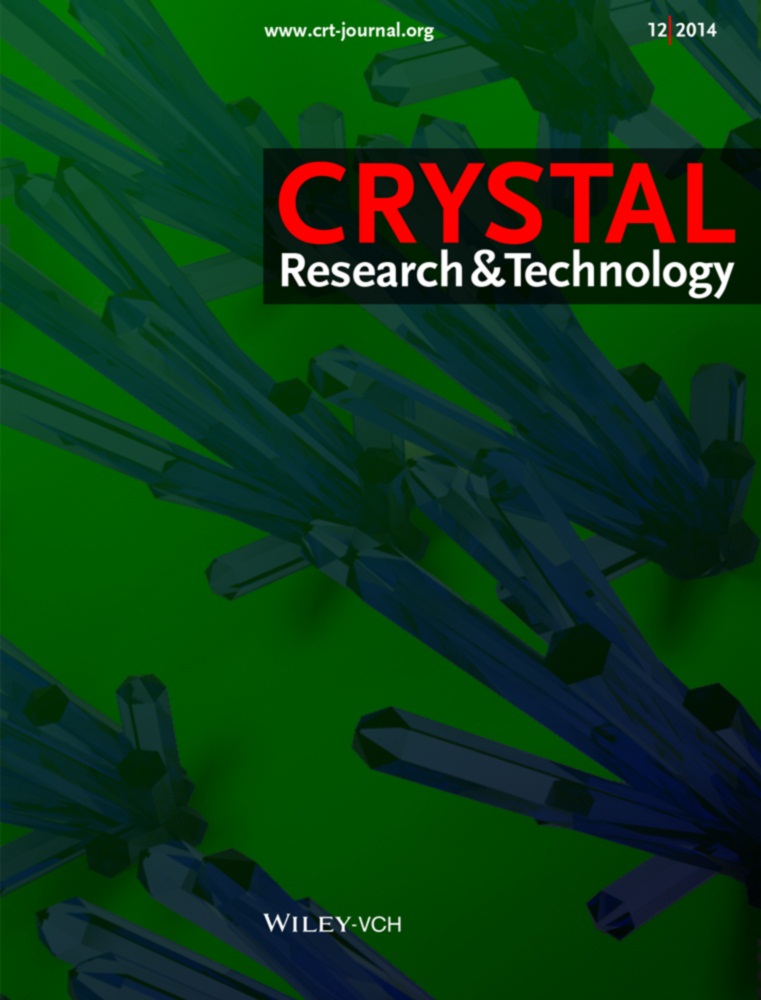Preeminent visible-light photocatalytic activity over BiOBr–BiVO4 heterojunctions
Corresponding Author
F. P. Cao
College of Chemistry and Pharmaceutical Engineering, Nanyang Normal University, Nanyang 473061, People's Republic of China
Corresponding author: e-mail address: [email protected], Phone: 86 377 63513540Search for more papers by this authorC. H. Ding
College of Chemistry and Pharmaceutical Engineering, Nanyang Normal University, Nanyang 473061, People's Republic of China
Search for more papers by this authorK. C. Liu
College of Chemistry and Pharmaceutical Engineering, Nanyang Normal University, Nanyang 473061, People's Republic of China
Search for more papers by this authorB. Y. Kang
College of Chemistry and Pharmaceutical Engineering, Nanyang Normal University, Nanyang 473061, People's Republic of China
Search for more papers by this authorW. M. Liu
College of Chemistry and Pharmaceutical Engineering, Nanyang Normal University, Nanyang 473061, People's Republic of China
Search for more papers by this authorCorresponding Author
F. P. Cao
College of Chemistry and Pharmaceutical Engineering, Nanyang Normal University, Nanyang 473061, People's Republic of China
Corresponding author: e-mail address: [email protected], Phone: 86 377 63513540Search for more papers by this authorC. H. Ding
College of Chemistry and Pharmaceutical Engineering, Nanyang Normal University, Nanyang 473061, People's Republic of China
Search for more papers by this authorK. C. Liu
College of Chemistry and Pharmaceutical Engineering, Nanyang Normal University, Nanyang 473061, People's Republic of China
Search for more papers by this authorB. Y. Kang
College of Chemistry and Pharmaceutical Engineering, Nanyang Normal University, Nanyang 473061, People's Republic of China
Search for more papers by this authorW. M. Liu
College of Chemistry and Pharmaceutical Engineering, Nanyang Normal University, Nanyang 473061, People's Republic of China
Search for more papers by this authorAbstract
The high recombination rate of photogenerated charges is the main problem that limits the photocatalytic activity of semiconductor photocatalysts. Herein, we have reported novel heterojunctions of BiOBr–BiVO4 fabricated by depositing BiOBr nanoflakes onto the surface of BiVO4. The optimum photocatalytic activity of the 0.925BiOBr–0.075BiVO4 heterojunction was almost 14 and 144 times as high as those of individual BiOBr and BiVO4 in visible-light degradation of methylene blue. Photogenerated holes of BiVO4 would play a dominant role in the photocatalytic system.
References
- 1W. D. Wang, F. Q. Huang, X. P. Lin, and J. H. Yang, Catal. Commun. 9, 8 (2008).
- 2C. H. Wang, C. L. Shao, Y. C. Liu, and L. N. Zhang, Scr. Mater. 59, 332 (2008).
- 3M. Shang, W. Z. Wang, and L. Zhang, J. Hazard. Mater. 167, 803 (2009).
- 4Z. Jiang, T. Xiao, V. L. Kuznetsov, and P. P. Edwards, Philos. Trans. R. Soc. London, Ser. A 368, 3343 (2010).
- 5L. F. Lu, K. Liang, and J. Zheng, Catal. Lett. 142, 771 (2012).
- 6J. Xia, S. Yin, H. Li, H. Xu, L. Xu, and Y. Xu, Dalton Trans. 40, 5249 (2011).
- 7J. H. Pan, H. Dou, Z. Xiong, C. Xu, J. Ma, and X. S. Zhao, J. Mater. Chem. 20, 4512 (2010).
- 8J. Fu, Y. L. Tian, B. B. Chang, F. N. Xi, and X. P. Dong, J. Mater. Chem. 22, 21159 (2012).
- 9L. Kong, Z. Jiang, T. C. Xiao, L. F. Lu, M. O. Jones, and P. P. Edwards, Chem. Commun. 47, 5512 (2011).
- 10C. Cheng, Y. H. Ni, X. Ma, and J. M. Hong, Mater. Lett. 79, 273 (2012).
- 11G. H. Jiang, X. H. Wang, Z. Wei, X. Li, X. Q. Xi, R. B. Hu, B. L. Tang, R. J. Wang, S. Wang, T. Wang, and W. X. Chen, J. Mater. Chem. A 1, 2406 (2013).
- 12Q. M. Wang, Y. Li, and Z. Zeng, J. Nanopart. Res. 14, 1076 (2012).
- 13M. Long, W. Cai, J. Cai, B. Zhou, X. Chai, and Y. Wu, J. Phys. Chem. B 110, 20211 (2006).
- 14G. E. Lei, J. Inorg. Mater. 23, 449 (2008).
10.3724/SP.J.1077.2008.00449 Google Scholar
- 15L. Ge, Mate. Lett. 62, 926 (2008).
- 16K. J. Liu, Z. D. Chang, W. J. Li, P. Che, and H. L. Zhou, Sci. China Chem. 55, 1770 (2012).
- 17A. P. Zhang, and J. Z. Zhang, J. Alloys. Compd. 491, 631 (2010).
- 18H. Xu, H. M. Li, C. D. Wu, J. Y. Chu, and Y. S. Yan, J. Hazard. Mater. 153, 877 (2008).
- 19T. H. Ji, Y. Fang, J. Y. Zhou, H. Y. Du, and J. Y. Sun, Spectrosc. Spect. Anal. 30, 1944 (2010).
- 20J. Guo, Y. Zhu, Y. M. Zhang, M. Y. Li, and J. Yang, J. Inorg. Chem. 27, 26 (2012).
- 21J. Yu and A. Kudo, Adv. Funct. Mater. 16, 2163 (2006).
- 22J. Ketterer and V. Kramer, Acta Crystallogr., Sect. C: Cryst. Struct. Commun. 42, 1098 (1986).
- 23Q. Xiao, Y. Gao, and X. Zhang, J. Inorg. Mater. 26, 1256 (2011).
- 24Z. H. Yuan and L. D. Zhang, J. Mater. Chem. 11, 1265 (2001).
- 25Q. C. Xu, D. V. Wellia, Y. H. Ng, R. Amal, and T. T. Y. Tan, J. Phys. Chem. C 115, 7419 (2011).
- 26J. C. Yu, J. Yu, W. Ho, Z. Jiang, and L. Zhang, Chem. Mater. 14, 3808 (2002).
- 27T. Li, L. Zhao, Y. He, J. Cai, M. Luo, and J. Lin, Appl. Cataly. B-Environ. 129, 255 (2013).
- 28A. L. Linsebigler, G. Lu, and J. T. Yates, Chem. Rev. 95, 735 (1995).
- 29Z. Jiang, F. Yang, G. Yang, L. Kong, M. O. Jones, T. Xiao, and P. P. Edwards, J. Photochem. Photobiol. A 212, 8 (2010).
- 30Y. N. Wang, K. J. Deng, and L. Z. Zhang, J. Phys. Chem. C 115, 14300 (2011).




